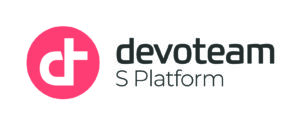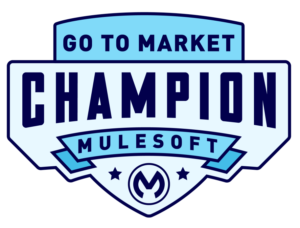Hi again!
As promised, I’m back to finish my tale. In the first blog, I told you a little about myself and how I got into working in the MuleSoft ecosystem. In this second blog, I want to complete the picture and tell you where I work and what I do there.
Well, let’s start by telling you about my employer.

Devoteam S Platform
I work for Devoteam (within Salesforce-aligned Vertical, known as S-Platform), where I’m a Lead MuleSoft Consultant. I’ve been with Devoteam for two years, and most of my time has been on a large integration project. The project integrates SaaS-based CRM and ERP applications, secure file storage servers and APIs across multiple applications. It’s been an exciting and extremely worthwhile project, originating from efforts needed to cope with the fallout of the Covid pandemic.
As one of the technical Leads within the company, my primary role involves assisting Integration and Application Architects in implementing their Vision. I not only help to design and build functionality (something I particularly enjoy doing) but also help demonstrate the capabilities of MuleSoft products. As you’d probably expect, with my role comes supporting other team members and assisting those junior to myself.
Dylan Jenkins is a Lead Consultant with many years of exceptional expertise in the MuleSoft ecosystem. Dylan’s extensive knowledge in this field makes him a reliable and trusted advisor in navigating the challenges of integration and digital transformation.
As a technical consultant, he has worked on a diverse range of projects, spanning both the public and private sectors. At Devoteam, his knowledge and advice are essential to the success of many MuleSoft implementations to which he is a key contributor; each showcasing his dedication to delivering solutions that meet the unique requirements of our clients.
There are always other things to do when not working on billable tasks or when between projects. We’ve built several MuleSoft Accelerators for different industries (one I’m particularly pleased with is the one for Healthcare). These can be viewed as templates for solutions addressing specific integration problems within particular domains. They are a set of assets that contain APIs that confront these issues, requiring only minor configuration and customisation.
As would also be expected from any MuleSoft Mentor, I like to be active in the wider MuleSoft community. This includes writing blogs and articles for publication, presenting on technical topics, and helping to answer general technical queries.
Within Devoteam UK, we currently have over ten MuleSoft Mentors – all with MuleSoft certifications, ranging from Certified Developer all the way up to Integration Architect. We even have a MuleSoft Ambassador, the level above MuleSoft Mentor. All are highly skilled consultants, many of whom are also Go To Market (GTM) Champions – an award highlighting demonstrable knowledge of a particular industry or domain.

Our office is on the south bank of the Thames in London, overlooking the river and not too far from the Shard. I like to travel in about once a month to meet the colleagues I generally only ever see over video calls. Remote working does have many advantages, but the downside is you miss out on the office culture. I realise that many people like the peace and quiet of working from home, which I also do (don’t get me wrong), but I often need the background buzz you get from an office environment so I play a lot of music while working.

The office also has a small recording studio for recording or filming presentations. I’ve even heard rumours that we may be getting a Pool Table. Maybe I’ll start going in more often!
Creative Tech for Better Change
Let me explain who Devoteam are in more detail. They are a multinational technology-based consultancy with offices in over 20 countries and over 10,000 employees. The company is aligned with five strategic partners. These are all big names you’ll be familiar with; Salesforce, Microsoft, AWS, Google, and ServiceNow.
I’ve already spoken about the Salesforce Pillar (S-Platform) where I work. But each partner has a dedicated pillar (M-Cloud, A-Cloud, G-Cloud, and N-Platform). You can think of these pillars as individual organisations focusing on complete end-to-end Design and Implementation – providing Consulting & Design, Technical expertise, Center of Excellence, and Managed Services. There’s always a lot of collaboration between pillars, as many solutions utilise multiple technologies and different platforms.

Devoteam, as an organisation, aims to be at the forefront of technology (as you can tell from the partners noted above). This involves building solid and lasting relationships with those partners, which benefits our customers and helps develop an individual consultant’s technical expertise. The company has a strong culture of self-learning and gaining technical certification, which I really appreciate. This gives us all access to tools such as Udemy, so we can utilise our spare time to enhance skills and learn new topics.
Goodbye once again, stay in touch!
So that’s my story – just a quick insight into what I do and what a MuleSoft Mentor is. I hope it was thought-provoking. If you want to connect on LinkedIn, here’s my profile. Mention that you read the blog when connecting!
Finally, if you think an IT career is for you, an Integration Developer/Architect is an excellent choice. You’ll have the opportunity to learn much, not just about those integration tools and platforms like MuleSoft. You’ll also need to develop an understanding of the systems and applications you’ll be integrating and learn how to use them. It’s true to say that many of the most dedicated and skilled IT Professionals work as Integration Specialists.
But, whatever you do with your life and career, enjoy it. Remember, it is for YOU to decide what you do with it, for you to decide how hard you want to work and what work-life balance you want.
So the last piece of advice I’ll give…
Take care.
Dylan
MuleSoft Mentor